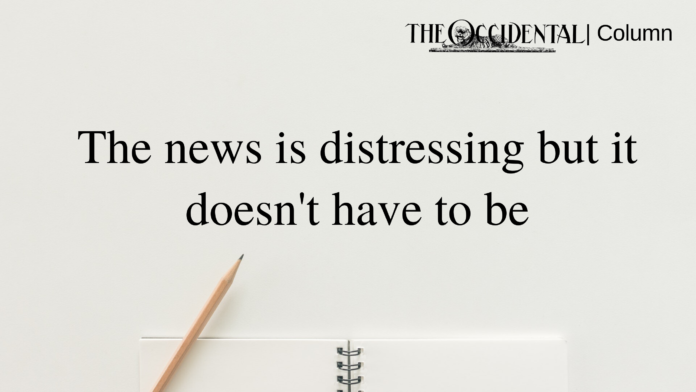Let us get the obvious out of the way — it is not fun to read the news right now. Between political pundits arguing about who will be the next president, to ongoing reports about climate change and now distressing statistics concerning the spread of COVID-19, our current headlines would trigger stress and anxiety in anyone. In an age of instant notifications and 24-hour news reports that stretch across the globe, avoiding the news for the sake of your own mental health is becoming more difficult.
Recent surveys show that more than half of Americans experience stress, anxiety, fatigue and difficulties sleeping as a result of the news. The need to stay informed drives unhealthy behaviors that do more bad than good for our mental health. This isn’t to say that we shouldn’t be aware of the world around us. Yet, our current news consumption is fueling an unhealthy obsession with headlines and ignoring stories that inspire good in the world.
News reports change your mood, producing feelings of sadness and anxiety. Constantly reading distressing news causes our bodies to release stress hormones that can have detrimental long-term health effects, such as cardiovascular disease and diabetes. Along with reading the news digitally, other methods of consuming news, such as TV news and social media, can have their own negative effects on your mental health. TV news’ tendency to sensationalize stories to generate more viewership, and therefore more revenue from advertisers, means that networks focus on the “bad” stories. Additionally, more reports are showing the relationship between social media use and mental illnesses like depression. As more Americans choose to get their news through social media, social media is now outcompeting newspapers as a primary source of news, and this trend isn’t going away anytime soon.
Instead of focusing on “good” stories, which do in fact exist, news outlets intentionally focus on stories meant to cause emotional distress, often just for the sake of increased viewership and, therefore, profit. It’s human nature to want to learn about the negative information that surrounds us; it’s how we keep ourselves safe by knowing what’s harmful in our environment so we can avoid it.
However, our early ancestors didn’t have CNN playing in the background for hours on end telling them that there’s a snake outside their cave. In modern life, every single threat in the world is immediately known and shared: reports of local crime, every change in the stock market, every new celebrity scandal and, of course, everything in between that poses a threat to our survival as a species.
This doesn’t mean that we should toss away our smartphones and get rid of cable (but really, why are people still paying for cable?). As despair-inducing as the headlines may seem, news can help instill some good into our everyday lives. The Good News Network publishes online articles about the things going right in the world, like this article about a man upcycling old coolers to make shelters for cats, or even this story about a group of volunteers helping to save languages from dying out.
The world can be, and often is, terrifying. We have always lived in an age of uncertainty. Your parents did, you are and your children most likely will. The news is how we learn about the world and connect to those outside of our communities. However, the news doesn’t have to scare us and make us apathetic to the state of things. News can be a powerful tool to help us make a better world, as long as we know when to turn it off.
The author for this piece is Aerex Narvasa, a member of a chapter of the organization at Occidental College. Active Minds is a national organization that aims to reduce the stigma surrounding illness and promote good mental health.
![]()



































